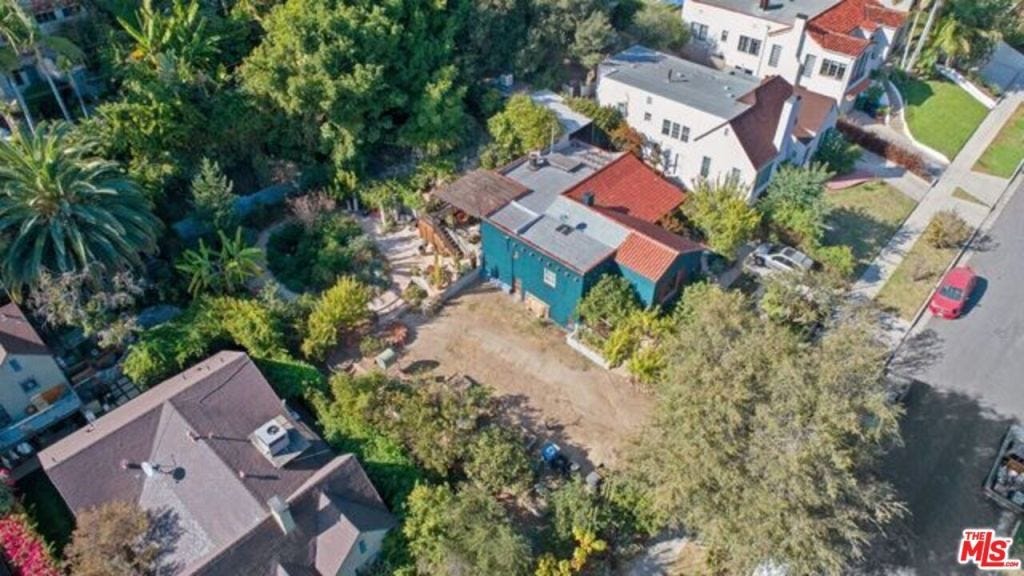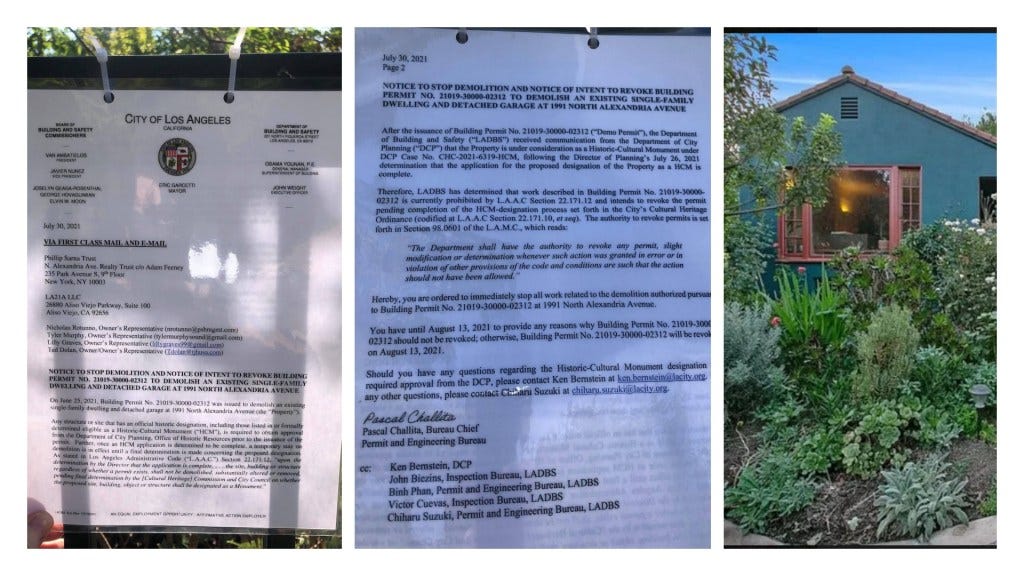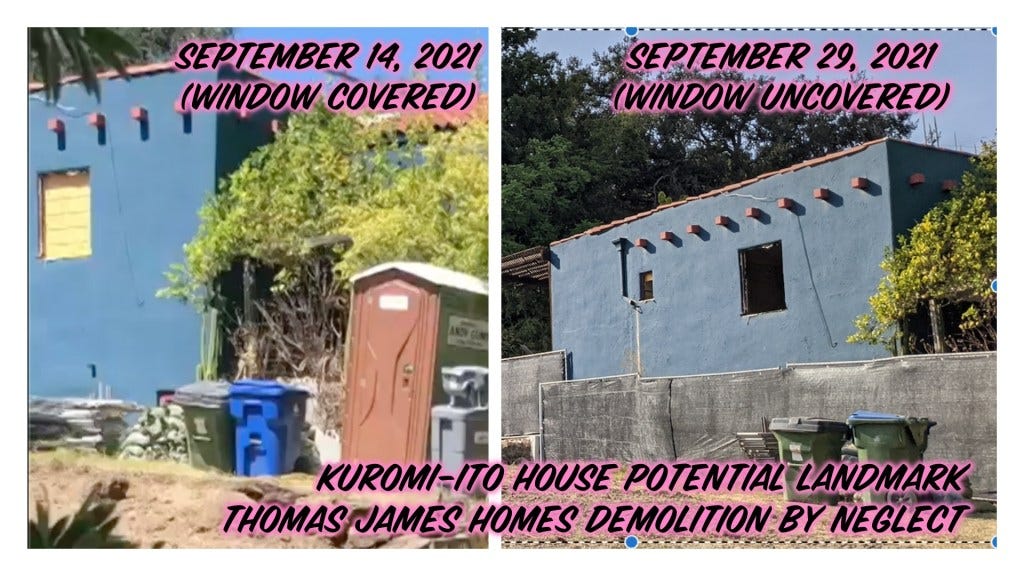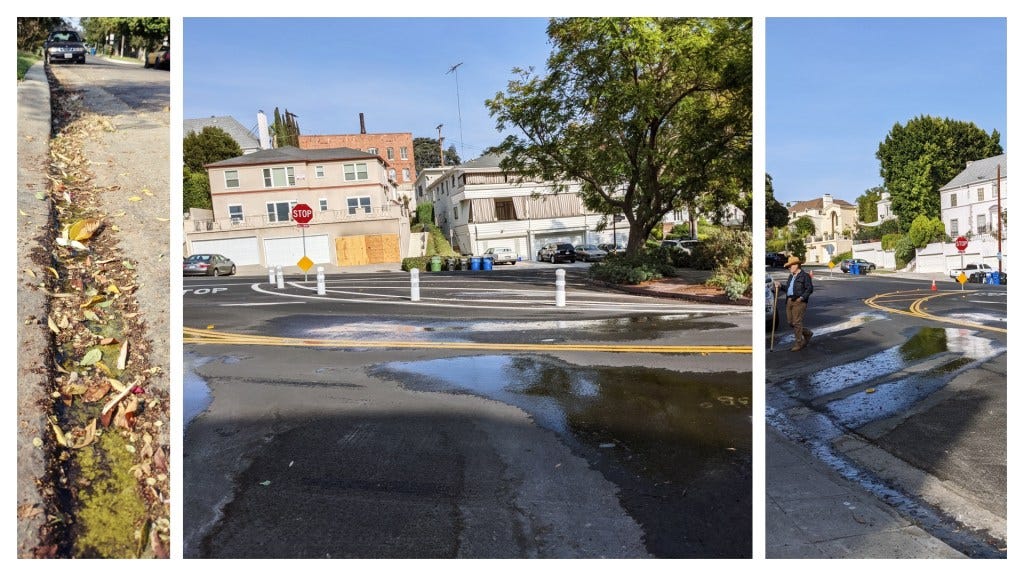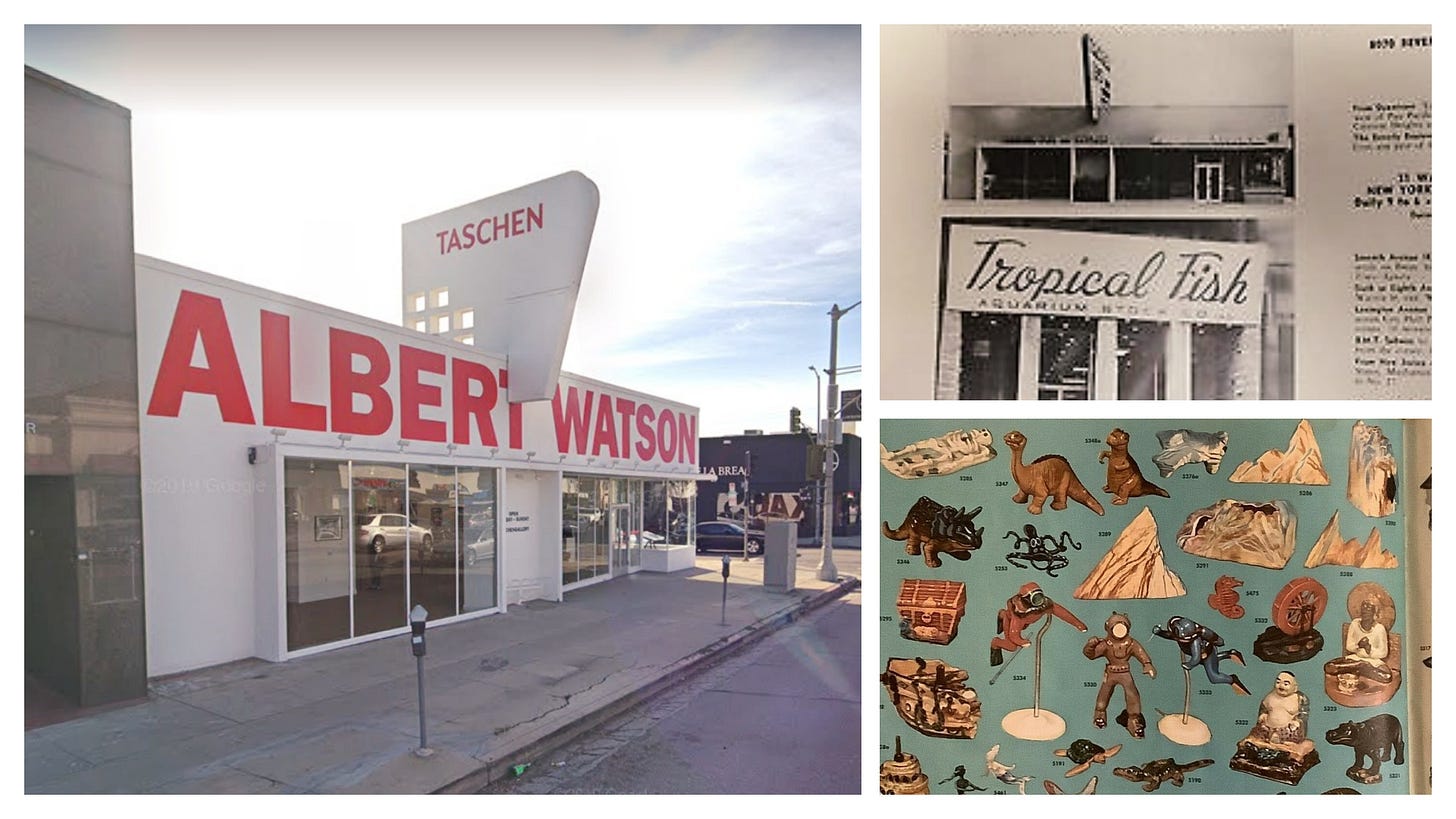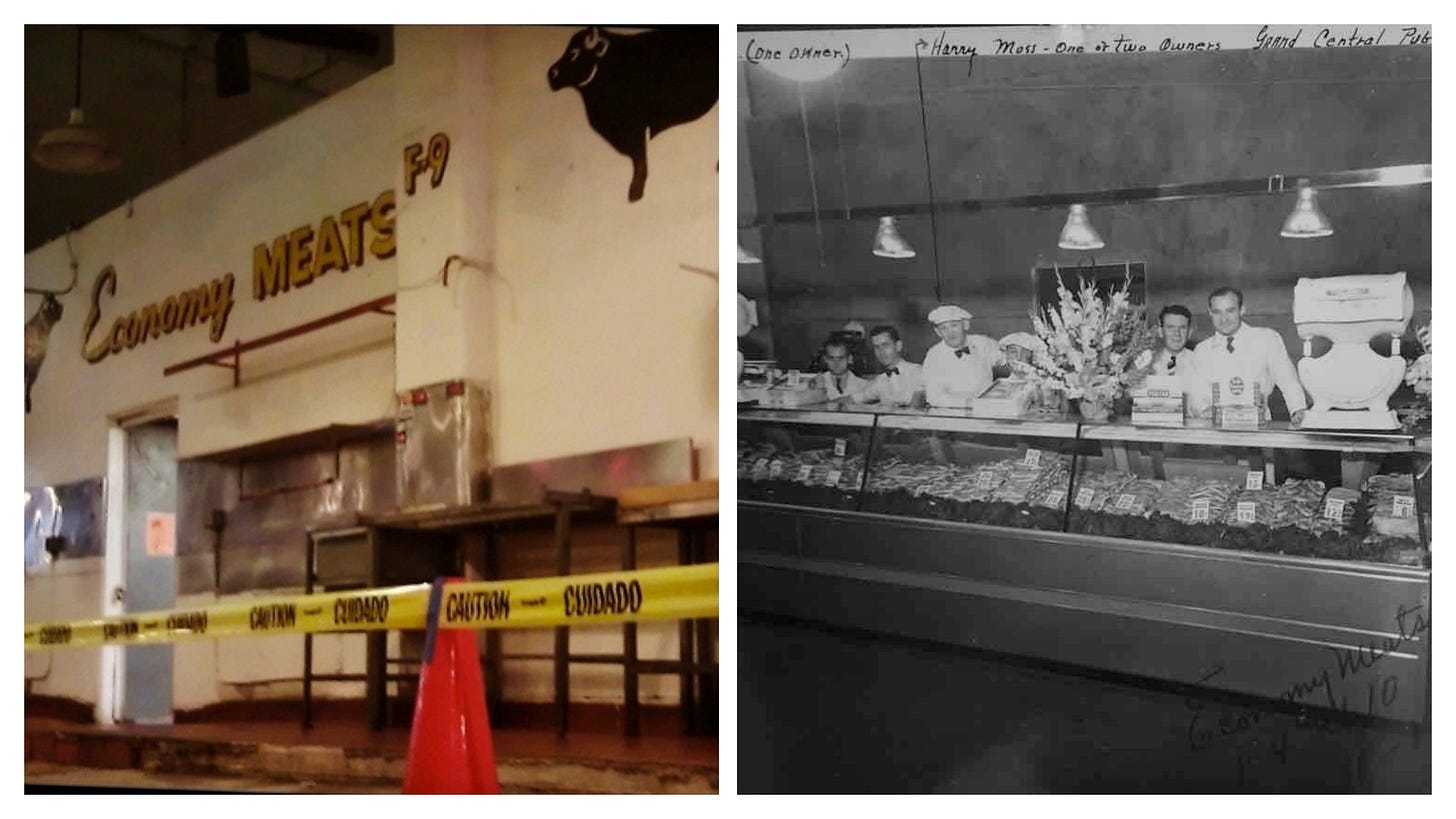Thursday: Your chance to save one of the lost creeks of Los Angeles, and landmark a significant Japanese-American home
Gentle reader,
Greetings from your friendly historic Los Angeles sightseeing tour company, now offering digital programming until we can again organize groups to gather and explore the city we love.
Thanks to everyone who tuned in to Sunday’s webinar, A Natural History of Los Angeles Freeways. It was a wild and illuminating virtual road trip, and you can still catch the program on-demand, as part of our growing library of immersive Los Angeles stories. Next up is Learning from Boyle Heights / Saving Los Angeles on Sunday, November 14, and we’d love to see you there!
When people ask why we get so involved in historic preservation advocacy, despite the frustrations of fighting a pro-development City Hall that's under multiple indictments for land use corruption, we answer that we feel called to do the work, want to be of service, and find it fascinating.
Every campaign we've taken up—from Saving the 76 Balls to objecting to the swapping of neon for LEDs in the Felix the Cat sign, getting Angels Flight moving again to opposing LACMA demolition, landmarking the Los Angeles Times to restoring Pershing Square—has taught us new things about all the ways Los Angeles is broken and in many cases brought us uncomfortably close to figures now under Federal indictment.
Along the way, we build alliances and find tools and tactics that citizens can use to have a voice. These battles might be hard, but they are never boring.
Recently, we got interested in a landmarking campaign initiated by Hollywood Heritage to designate two parcels on Alexandria Avenue in Los Feliz associated with the influential Kuromi-Ito family of Japanese-American flower farmers and retail florists. Our interest was piqued by several factors:
• The walkable, tree-lined streets bordered by Normandie, Vermont, Franklin and Los Feliz contain some of the city's loveliest intact stretches of century-old multi-family vernacular apartment buildings interspersed with single-family homes. There is a very strong case to protect this community with a Historic Preservation Overlay Zone (HPOZ), but pro-developement Mayor Eric Garcetti has banned new ones from being created.
• The Kuromi-Ito archives have been accessioned to the Huntington Library, where we are card-carrying readers and volunteer collections matchmakers.
• The property is owned by the notorious Aliso Viejo based development company Thomas James Homes, whose business model relies on purchasing historic single-family residential properties for above market value, demolishing them along with all the old trees and landscaping, and erecting huge cookie-cutter $2,000,000 white boxes. Never heard of Thomas Beadel and James Simpson? You will. In their just-filed IPO, they boast "Our mission is to transform the U.S. single-family urban housing market. Bringing scaled single-family home production to urban markets ripe for disruption."
• The real estate listing for the house and garden lot at 1979-1991 North Alexandria Avenue made note of a very special and unusual feature: "Natural artesian springs flows to fill the [koi] ponds and irrigate the landscaping." Heaven for a gardener, if only one might have been able to afford it.
We were very interested in the artesian springs, and concerned about what might happen to them if Thomas James Homes was allowed to demolish the existing house and gardens and cover them with a huge concrete slab.
For many years, self-described L.A. Creek Freaks have been looking for the source and path of the Arroyo de la Sacatela, or Sacatela Creek. Alexandria Avenue is close to where the lost stream was known to have began. Could the endangered koi ponds behind Jim Ito's house be the source of the Sacatela?
Recommended reading: Judith Lewis' 2006 L.A. Weekly feature The Lost Streams of Los Angeles, Militant Angeleno's 2008 blog post A River Ran Through It: In Search Of Sacatela Creek, Jessica Hall's 2008-10 L.A. Creek Freak blog posts on the Arroyo de la Sacatela and Denise Hamilton's 2021 Alta feature Soaked Through.
The properties sold for $2,900,000 in May 2021 and a demolition permit was approved in June. The Office of Historic Resources received Hollywood Heritage's landmark nomination for the Kuromi-Ito Property, but for unknown reasons they declined to present it to the Cultural Heritage Commission.
In late July, we advocated strongly with the office of councilwoman Nithya Raman (CD4), asking that they compel City Planning to accept and hear the nomination, and to our great relief, they did so. The demolition permit was stayed.
A day before demolition was to begin, a stop work order went up at 1991 North Alexandria directing Thomas James Homes not to commence demolition, because the house was under consideration as a protected city landmark.
On August 19, the Cultural Heritage Commission heard Hollywood Heritage's nomination, and agreed to take the matter under consideration. However, facing pressure from the property developer's rep, they agreed to split the nomination and exclude the garden plot at 1979 North Alexandria.
In mid-September, although they had no grading permits, Thomas James Homes used heavy machinery to destroy all of the mature fruit trees and plantings on the garden plot. Next door at 1991 North Alexandria, they removed the front picture window and the plywood coverings over other doors and windows, leaving the house vulnerable to the elements, vandalism and trespass. This is a violation of the stop work order, as well as being a truly nasty and destructive thing to do to a beautiful home that might soon be an official city landmark.
A few weeks ago, alerted by a neighbor that the house had been left unsecured, we went to visit the Kuromi-Ito Property. What we saw shocked us. It wasn't just that the doors and windows were uncovered, or that fallen fruit was ground into the dust where trees had been ripped from the ground.
It was the water.
A constant flow was spilling into the gutters in front of the house and garden parcel, and they were green with algae. We followed the algae path down hill to the middle of the block, where spreading pools were seeping up from the center of the newly paved roadway. The neighbor had told us that there had been a lot of problems with water coming up through the asphalt, and that the Department of Public Works had repeatedly resurfaced it.
Is this the lost Arroyo de la Sacatela, emerging through the road because it's been stopped up elsewhere? Maybe! We don't really know, but we'd like to know. To that end, we've been learning about the convoluted and dysfunctional process for investigating and protecting urban watershed resources, and will share what we've found out.
A 401 Certificate is a document issued by the Los Angeles Water Board granting approval for development of a site with a watershed resource. A 404 Certificate, issued by the Army Corps of Engineers, is a rejection of such development. But try to get either one, and you'll run into a hall of mirrors.
In looking for the key to having the artesian springs on Alexandria Avenue assessed for potential 401 or 404 Certification, we have been in communication with the following agencies, entities and individuals: The L.A. Bureau Of Engineering's Environmental Management Group and the Clean Water Division, the General Manager of the Los Angeles Department of Building and Safety (LADBS), the L.A. Sanitation Department's Watershed Protection Division, the Planning Director from Council District 4, the Department of Public Works, and the L.A. Water Board, which is a state regulatory agency that oversees watershed resources in the region.
And this is the frustrating result of our inquiries: The Los Angeles Water Board won't initiate an investigation without a report from a geologist. If LADBS won't require a 401 certificate based on a geologist's report as part of its permit approval review, then there's nothing the L.A. Water Board can do.
As with so many of our preservation projects, the more questions we ask, the more questions we have. This is a record that breaks the record player. There may be a precious spring on the property that is eligible for watershed protection, but the agencies in charge of determining one way or the other are not willing or able to act, or even to walk onto the property and sink a pole into the ground.
The only way they can investigate is if the property owner—the same corporation that left the potential landmark open to the elements in violation of the stop work order—volunteers to pay a geologist to inspect and report on the property, and then provides that report to LADBS, who can then forward it to the L.A. Water Board.
The idea of watershed resource protection being entirely at the discretion of property owners is an absurd one, but unless the city steps up and demands action, this is where we are.
Tomorrow, Thursday, October 21 at 10am, the Cultural Heritage Commission will hold its second hearing to determine if the Kuromi-Ito Property will be sent on to City Council as a potential landmark. They can, if they chose to, direct LADBS to require a 401 certificate based on a geologist's report as part of its permit approval review for both of the parcels that were part of the original landmark nomination. We very much hope that they do so, and will be making that request of them tomorrow.
If you'd like to call in to support the landmarking of the Kuromi-Ito Property, and ask the commissioners to take action to also protect the vulnerable artesian springs on the site, you can find telephonic call-in and Zoom info at this PDF agenda link. This item is #9 on the agenda, and will come towards the end of the meeting, though we're not sure exactly what time that will be.
If you'd like to have your say at the beginning of the meeting, you can ask to speak on General Public Comment (item #4). You will have two minutes in which you can speak specifically about the need for some City agency to compel LADBS require a 401 Certificate before granting a development permit for 1979 North Alexandria Avenue and the watershed resource on or very near the site.
Since the CHC is looking at the Kuromi-Ito Property as a potential landmark, we think they should be interested in the very real possibility that a diverted spring will open up a giant sinkhole and swallow the house!
yours for Los Angeles,
Kim & Richard
Esotouric
In the latest subscriber's edition of this newsletter—$10/month, cheap!—Visiting time capsule mansions of Redlands, in the footsteps of Leo Politi—a beautiful book inspires an architectural treasure hunt, and brings one of our favorite Southern California artists into view.
CLOSELY WATCHED TRAINS
Oy. The Academy Museum left the Jews out. (And in the May Company building, also a Jewish-owned business, no less.)
With this institution’s opening, we've been thinking of Steven Anthony, who fought seizure of his family home for the politically connected, failed 1960s Hollywood Museum. Meet his family on our Storybook Architecture webinar.
The wrecking ball is coming for this wonderful 1946 storefront at Beverly and Crescent Heights, the Aquarium Stock Co. that was most recently Design Within Reach and the Taschen gallery. The synagogue next door is building senior housing. Once again, SurveyLA has failed to recognize a building of architectural distinction that also has significant cultural importance. The modern exotic fish keeping hobby was born here in the 1950s. And the sign used to be even better.
The most delightful segment of this year's Los Angeles Home Movie Day production was the selection of drag icon Charles Pierce's home movies. We want to spend the holidays with Charles and his mom!
After getting busted selling other companies’ meat, "ethical" butcher Belcampo is kaput. But it's too late for legacy LA business Economy Meats, forced out by the "curators" under previous Grand Central Market ownership. Give Downtown L.A. a normal meat vendor!
So long, LACMA. After breaking ties with the foundering museum, the Ahmanson Foundation partners with The Huntington to acquire European and American masterpieces, starting with Thomas Cole's "Portage Falls on the Genesee" (1839), on view next month.
The aggrieved Studio City neighbors don't mix with the zillionaires whose kids go to Harvard-Westlake, so they put up yard signs to complain about councilman Paul Krekorian's sabotage of the Weddington landmark. The student paper picked the story up! (see page 12)
Los Angeles needs to protect tenants from speculators who buy landmark rent controlled buildings that quickly empty out after a sale, like Hollywood's Hillview Apartment Hotel did. Marketing materials were explicit on the intentional displacement.
Redevelopment threatens the delightful 1960s Reliance Drive-In Dairy triangle sign at 5805 Florence Avenue. While Bell Gardens does have a landmark ordinance, they rarely invoke it, and we're worried this sweet, cool relic might just go *poof*
After a serious fire last month, we're wishing a quick rebuilding to Gardena legacy business B & W Tile, modern crafters of mid-century and art deco glazes and specialty pieces used for vintage bathroom and kitchen restoration.
Culver City’s great Museum Of Jurassic Technology is reopening with limited timed entry, and a little birdie tells us that if you explored the place before the pandemic, you're in for a lot of surprises on your return.
This is nuts: after displacing vulnerable senior Sakura Gardens residents for a market rate redevelopment scheme, San Diego developer Pacifica's City Planning case has been terminated for lack of action. So many COVID deaths on their watch.
Corruption Korner: If you've followed our historic preservation work, you know we often tangled with councilman Jose Huizar over his pro-development policies. His RICO arrest revealed the rot beneath the hype. We're glad to be a part of this upcoming podcast, which you can preview here…. A fascinating interview with Nick Hanna, the former U.S. Attorney who indicted Huizar and Mitch Englander, and has a lot to say about the Mark Ridley-Thomas charges, and the failure of anyone in City Hall to blow the whistle…. When Huizar ran Downtown L.A., his use of opaque non-profits like Pershing Square Renew stood out. It's a trend in California politics. Tomorrow, the Fair Political Practices Commission discusses new regulations. We think they don't go far enough.




